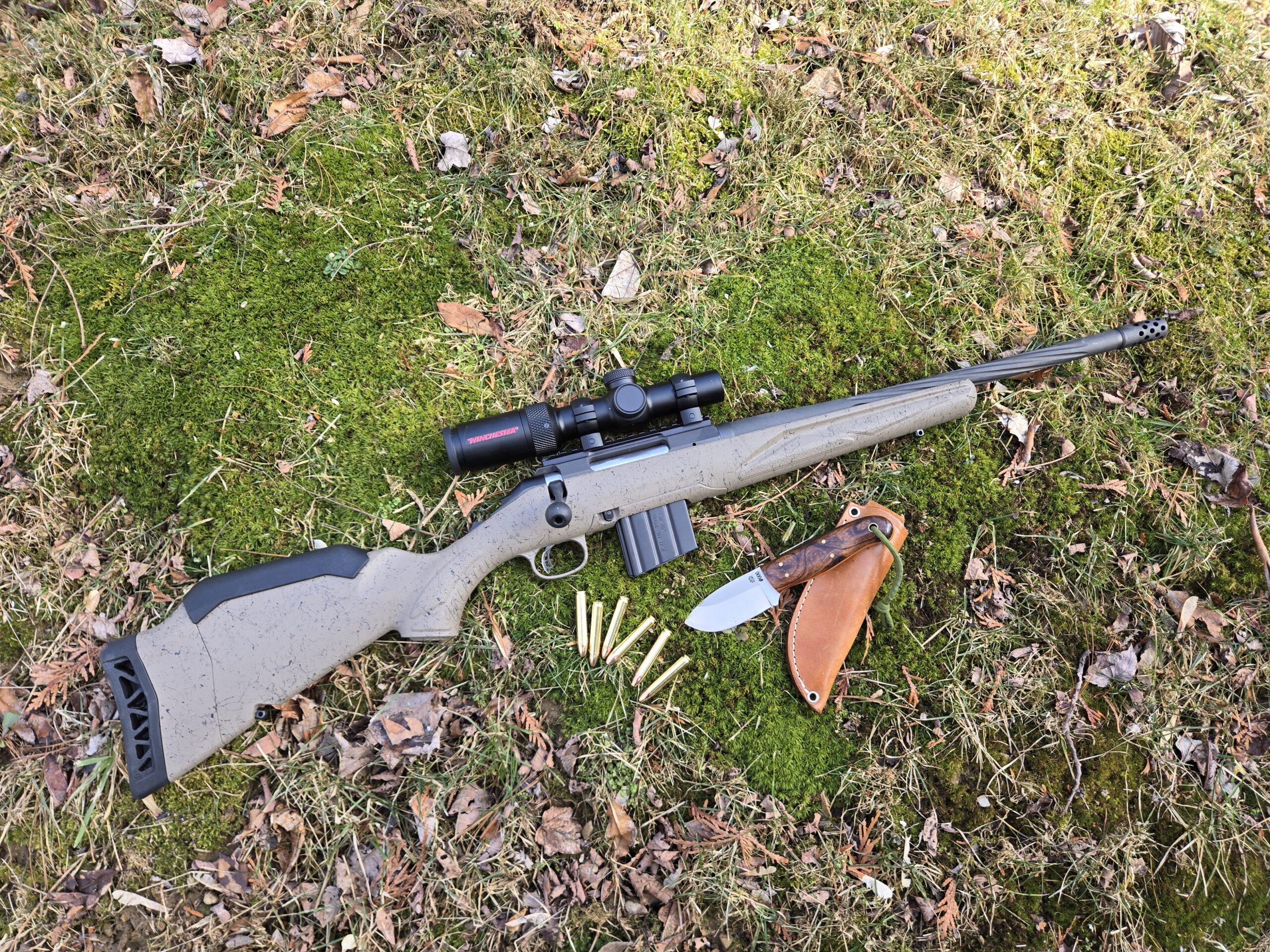I hear the terminology for different muzzle devices misused and mangled frequently. As in…a lot. And it’s not just newbies who are guilty of mis-identifying these things. Plenty of “gun guys” don’t really know the difference.
So to help alleviate the problem and clear up some confusion, here’s the difference between the most commonly used muzzle devices in use today.
Flash Hider
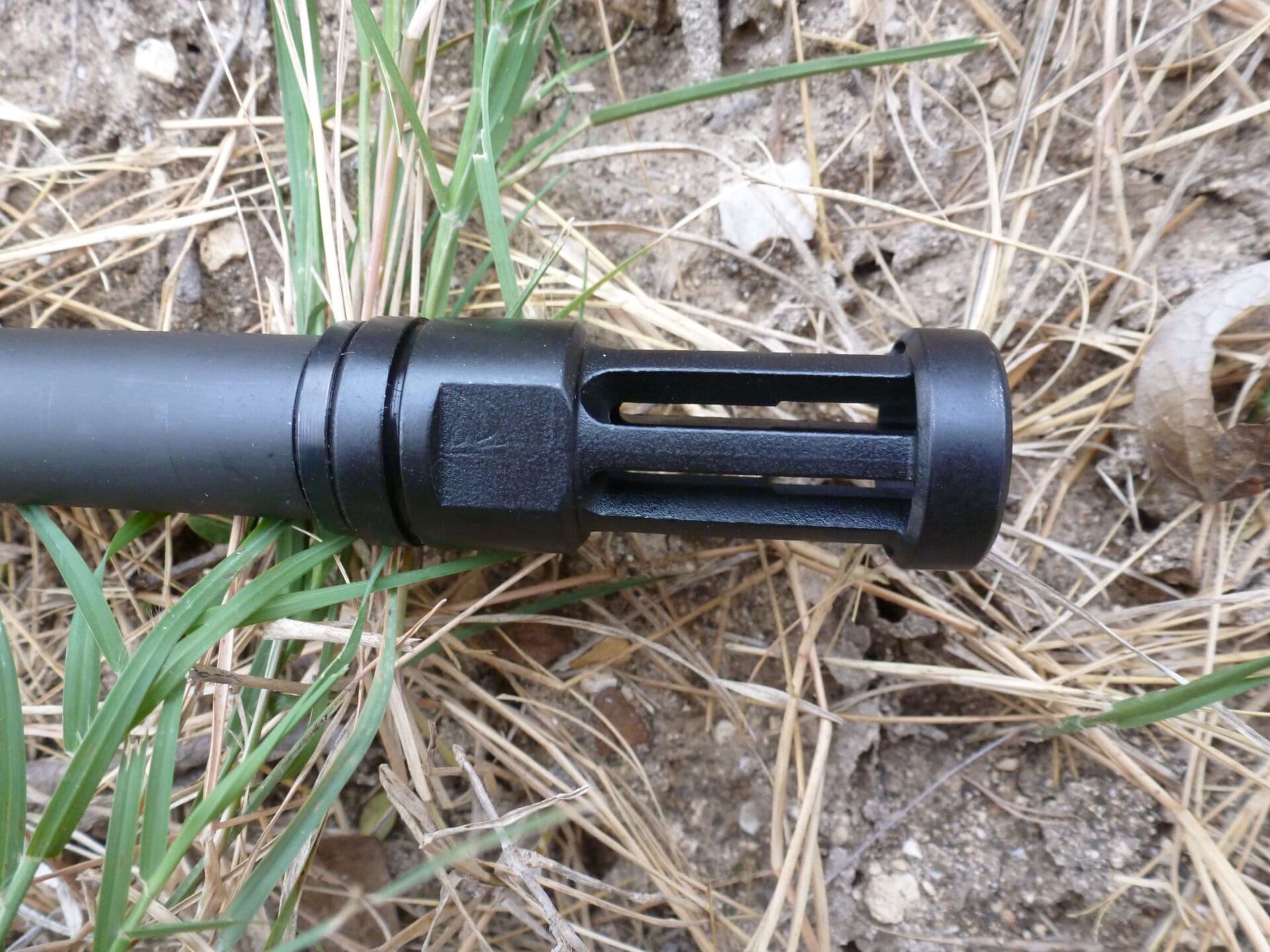
When you buy an AR-15, or any modern rifle with a threaded barrel, the default muzzle device is typically some kind of flash hider. It’s the standard-issue muzzle device for the M16 and M-4 rifles in the U.S. military, and it’s what the gun companies tend to use by default as well.
The idea behind a flash hider (or flash suppressor) is pretty simple to understand. When a gun fires a round of ammunition — especially a carbine like the AR-15 — most of the powder is burned inside the barrel and used to propel the bullet downrange. However, most popular AR-pattern rifles are sold with 16-inch long barrels. Since the 5.56 NATO cartridge was designed to completely burn its powder in a 20-inch barrel, that leaves four missing inches worth of unburnt powder left over after the projectile is gone.
That unburnt powder combusts as soon as it clears the end of the barrel, which results in a good size fireball that’s very visible. That’s bad for military use, but even for civilian shooters, that flash signature has a tendency to obscure the sights, ruin low light or night vision, and make follow-up shots more difficult.
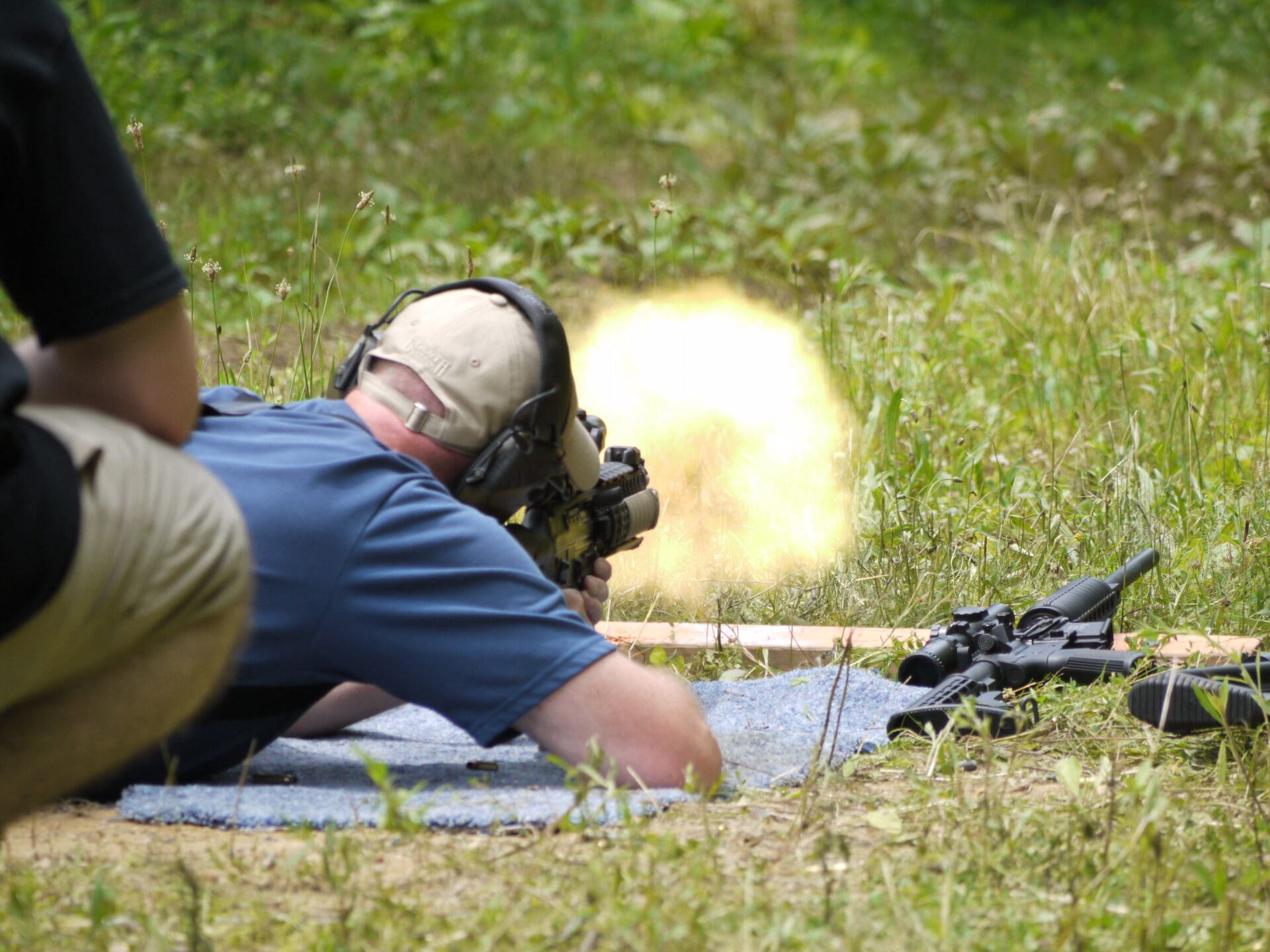
A flash hider works by efficiently mixing the air and the unburnt powder at the end of the muzzle in such a way that there is little or no flash. To understand exactly how it does that requires knowledge of of fluid dynamics and chemistry, a background that I lack. But you can see that it works by comparing a gun with a flash hider with one that only has a bare muzzle.
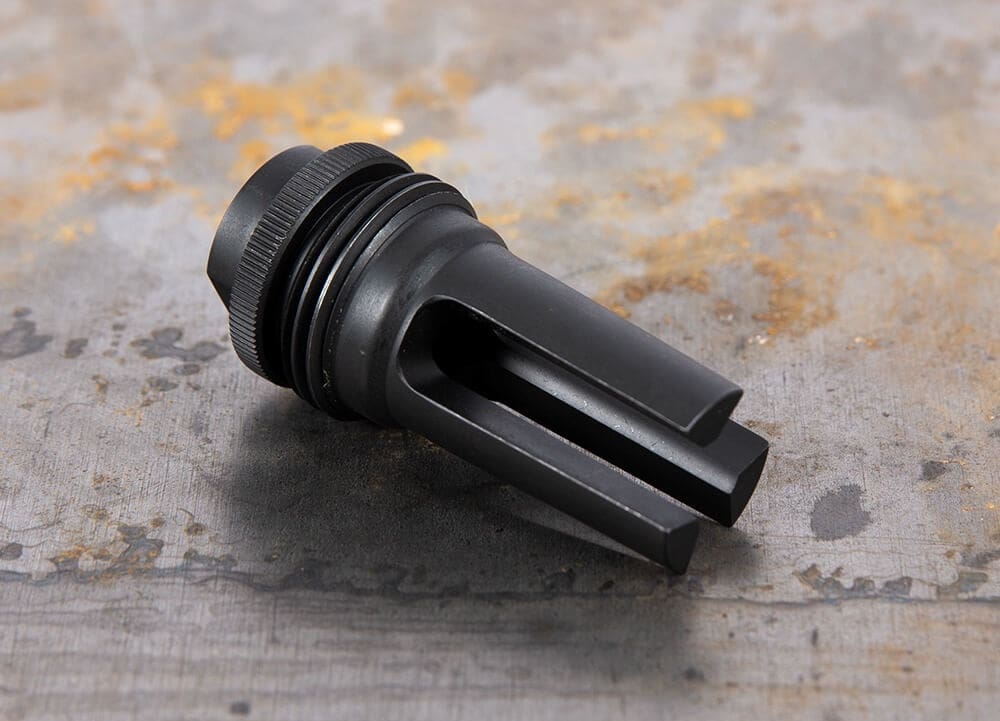
There are lots of different kinds of flash hider desiogns, and the most efficient are those with three prongs. Whether manufactured by Surefire, SilencerCo, Wilson Combat, or Palmetto State Armory, they all make that visible flash disappear pretty efficiently.

The standard A2 “birdcage” flash hider that’s used on most AR-15 rifles is also pretty efficient, but the real reason why it’s used is that it’s a combination flash hider and compensator.
Want flash suppression data on different devices? Check out Jeremy’s first flash hider roundup here, and the second one here.
Compensator
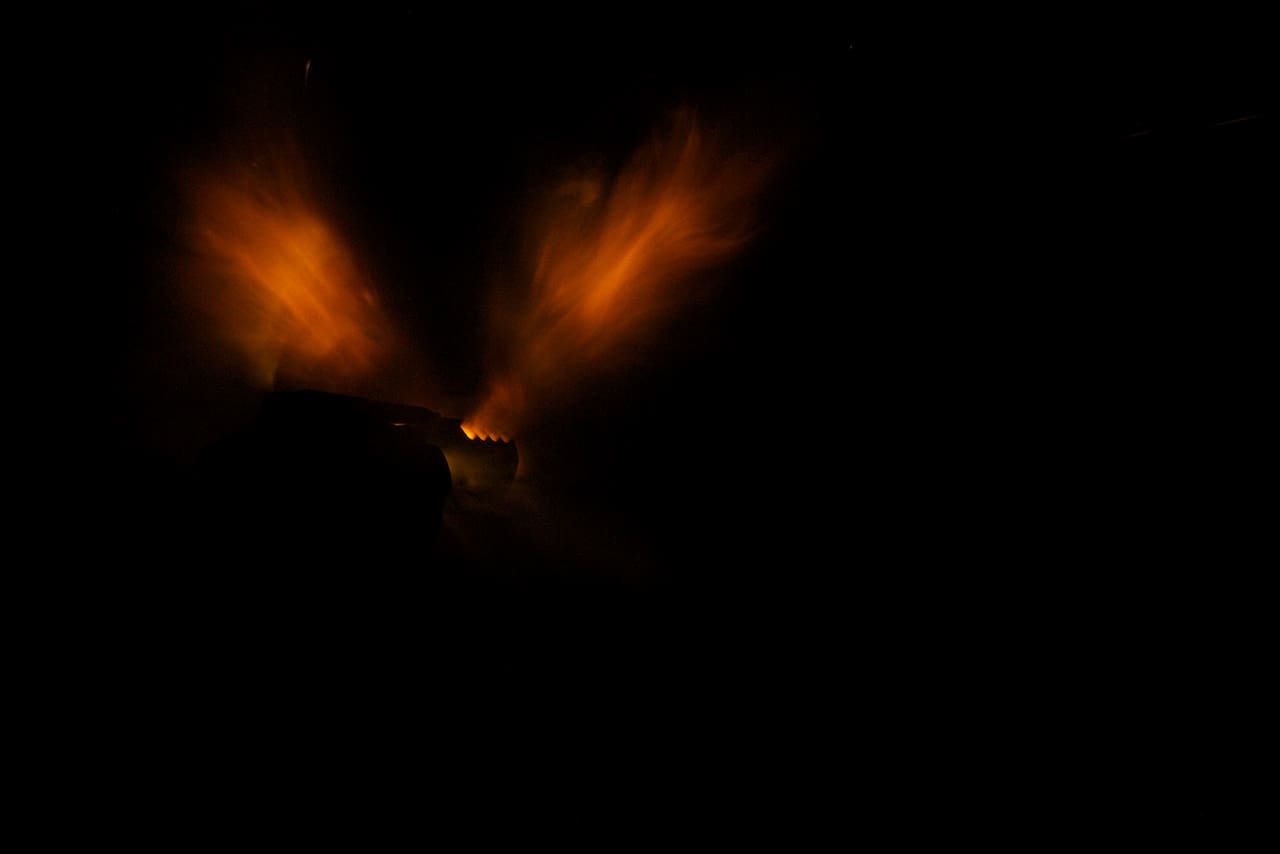
A compensator or “comp” is a muzzle device designed to counter (or compensate for) the vertical rise of the barrel when the gun is fired. The body mechanics involved in firing a gun means that there’s a good bit of muzzle rise or “flip” when the gun goes bang, an effect where the recoil of the gun is translated into the muzzle climbing vertically.
In order to counter that muzzle rise effect, a compensator vents some of the gasses that escape from the barrel vertically. As we remember from physics, every action has an equal but opposite reaction. So the vertically vented gasses have the effect of forcing the muzzle back down, keeping it on target.

The A2 birdcage flash hider on an M16 or AR-15 rifle has cuts on the top of the device that vent the gas and look like, well, a bird cage. The bottom of the device is solid with no cutouts. Not only does this keep the muzzle blast from kicking up much dust, it also provides a solid surface against which the gasses can push to force the muzzle down, compensating for the natural upward force.
Compensators and flash hiders are great, but they don’t do a thing to mitigate the felt recoil of the firearm. Larger, hard-hitting calibers like rifles chambered in .50 BMG have a ton of recoil that, if not properly mitigated, can give you a serious jolt.
That’s where the muzzle brake comes into play.
Muzzle Brake
A muzzle brake (not a muzzle break) is designed to take some of the kick out of the gun when it discharges. As the bullet leaves the muzzle, the expanding gasses that follow quickly start escaping along the path of least resistance (concussion) — which usually means slightly to the side and around the bullet.
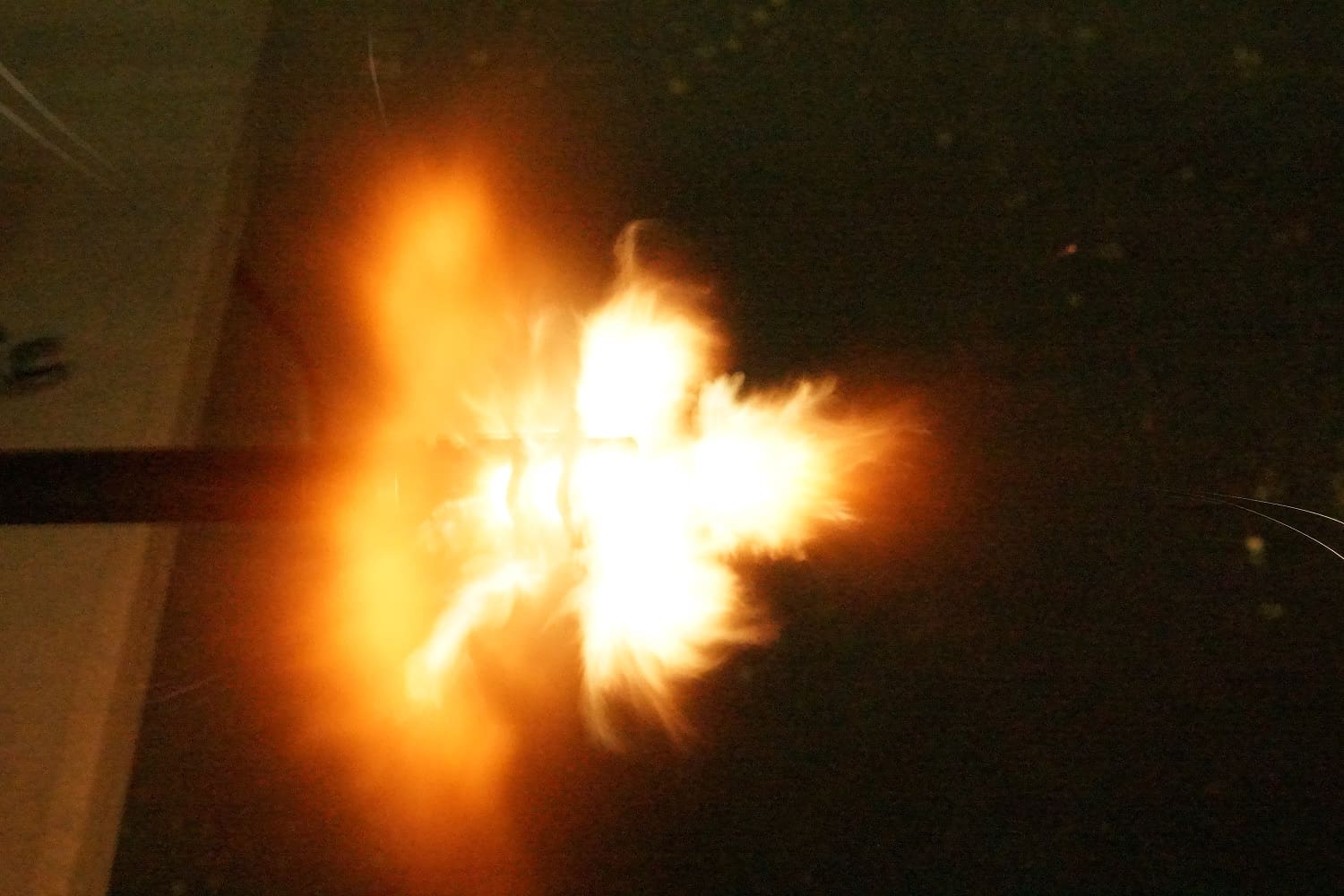
With a muzzle brake, those gasses first hit a solid metal wall before being vented out the sides. Once again the wonders of physics take over, and the force pushing forward on that metal wall moves the gun forward and counteracts some of the rearward force of the gun.
While a brake can vent those gasses in any direction, most brakes vent the gasses to either side of the barrel and not vertically into the line of sight of the shooter. It also creates a pressure wave that moves horizontally along the firing line, often annoying those to either side of the shooter.
Another increasingly popular (though highly regulated) form of muzzle brake is the silencer. The baffles in a can that slow the gasses and turn that loud “BANG” into a more squishy “pffffft” sound also act as a massive muzzle brake, greatly reducing the recoil of the gun.
That’s one of the reasons that a Neilsen device is required on a handgun silencer. It’s spring or piston that allows the barrel to recoil enough to kick the slide back and cycle the semi-automatic action as the silencer itself is being moved forward by the gasses.
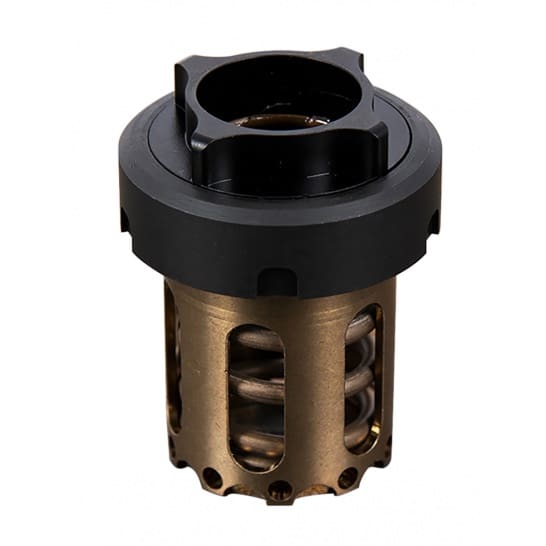
Looking for data on which brakes brake the best? Check out Jeremy’s muzzle brake tests. First 5.56 test here, second here, third here. And the .308 test here.
Combination Devices
Naturally, the ideal muzzle device combines one or more of the features of the devices above. That’s why combination devices, like the A2 flash hider or Precision Armament AFAB Hybrid muzzle device, are extremely popular.
The most common muzzle device for competition shooters is the compensating muzzle brake, which reduces vertical muzzle climb and felt recoil without also caring about the visibility of the firearm. As a result, some fantastic muzzle flashes can be seen in the chambers of the device as the gun goes off.
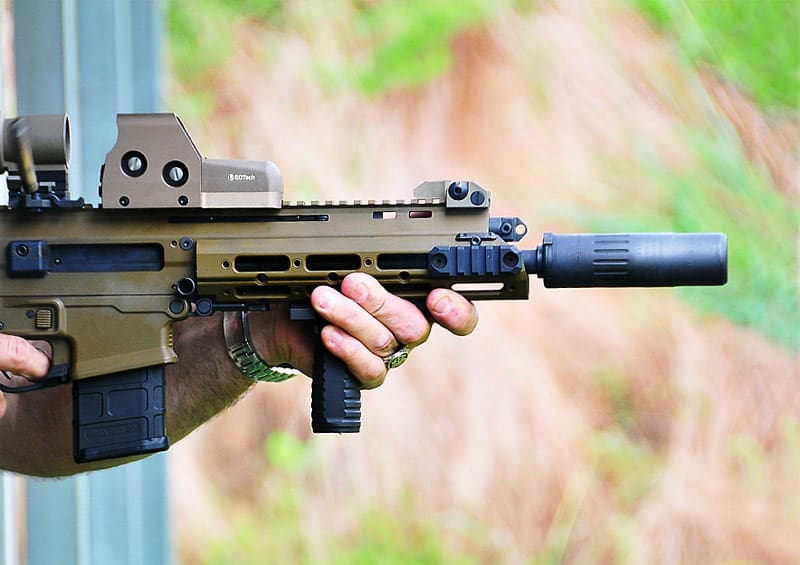
The ideal muzzle device, by almost any measure, is a silencer (AKA a suppressor). It reduces all of the above and does it extremely efficiently. But silencers add some length, are relatively expensive, require the payment of a $200 tax and entail a months-long wait. That’s something lots of gun owners aren’t willing to do.
For me, if I can’t have a silencer, I prefer a straight muzzle brake. Vertical climb is something I can handle with sufficient training, but every little bit of help I can get in the recoil department is always appreciated.


